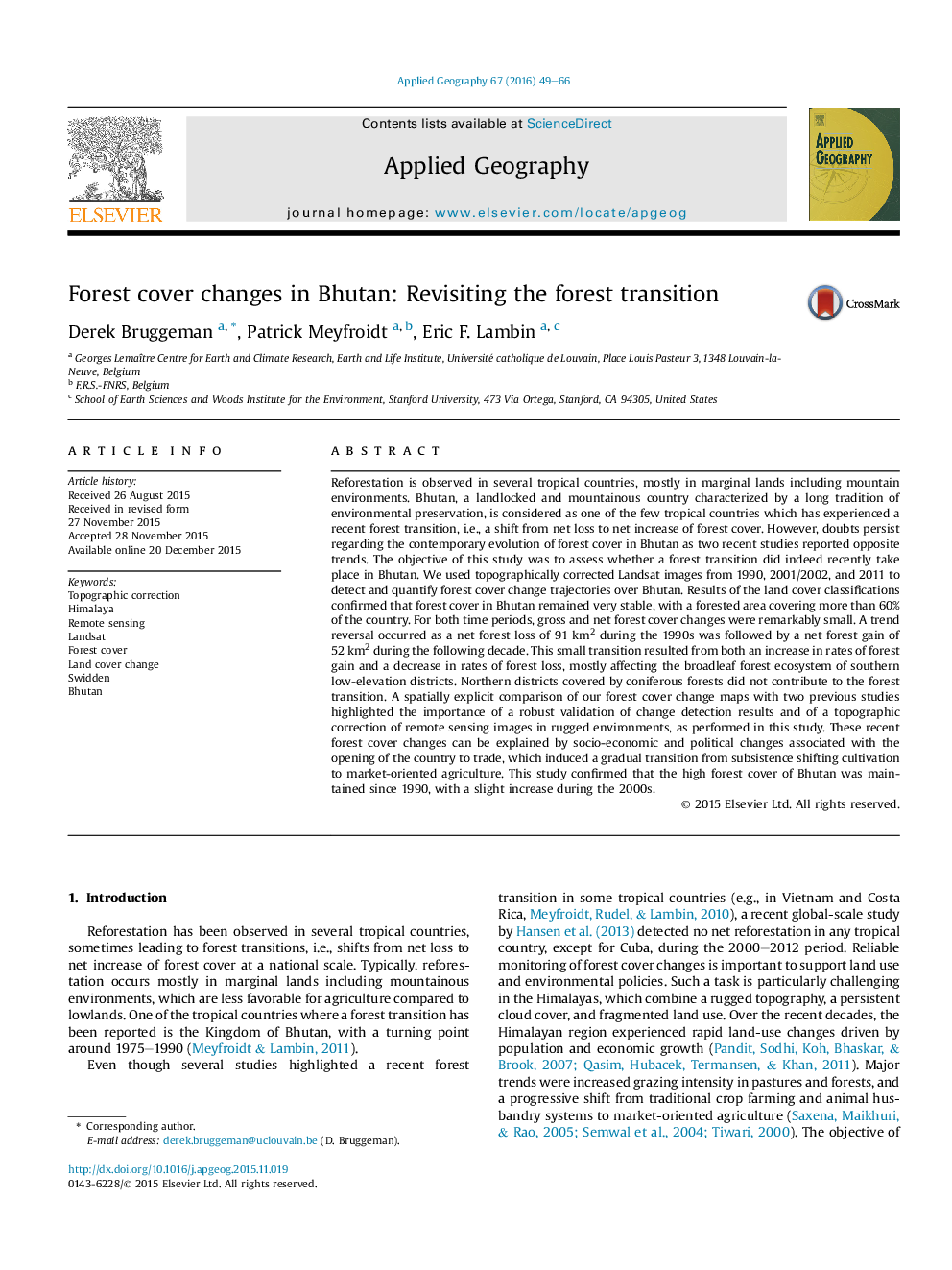| کد مقاله | کد نشریه | سال انتشار | مقاله انگلیسی | نسخه تمام متن |
|---|---|---|---|---|
| 83209 | 158696 | 2016 | 18 صفحه PDF | دانلود رایگان |
• Forest cover above 60%, very stable between 1990 and 2011.
• A slight forest transition occurred between the 1990s and the 2000s.
• Trend reversal mainly explained by changes in the broadleaf forest biome.
• Highlights the need for topographic corrections and validation of change maps.
• Forest cover changes related to conservation policies and new market opportunities.
Reforestation is observed in several tropical countries, mostly in marginal lands including mountain environments. Bhutan, a landlocked and mountainous country characterized by a long tradition of environmental preservation, is considered as one of the few tropical countries which has experienced a recent forest transition, i.e., a shift from net loss to net increase of forest cover. However, doubts persist regarding the contemporary evolution of forest cover in Bhutan as two recent studies reported opposite trends. The objective of this study was to assess whether a forest transition did indeed recently take place in Bhutan. We used topographically corrected Landsat images from 1990, 2001/2002, and 2011 to detect and quantify forest cover change trajectories over Bhutan. Results of the land cover classifications confirmed that forest cover in Bhutan remained very stable, with a forested area covering more than 60% of the country. For both time periods, gross and net forest cover changes were remarkably small. A trend reversal occurred as a net forest loss of 91 km2 during the 1990s was followed by a net forest gain of 52 km2 during the following decade. This small transition resulted from both an increase in rates of forest gain and a decrease in rates of forest loss, mostly affecting the broadleaf forest ecosystem of southern low-elevation districts. Northern districts covered by coniferous forests did not contribute to the forest transition. A spatially explicit comparison of our forest cover change maps with two previous studies highlighted the importance of a robust validation of change detection results and of a topographic correction of remote sensing images in rugged environments, as performed in this study. These recent forest cover changes can be explained by socio-economic and political changes associated with the opening of the country to trade, which induced a gradual transition from subsistence shifting cultivation to market-oriented agriculture. This study confirmed that the high forest cover of Bhutan was maintained since 1990, with a slight increase during the 2000s.
Journal: Applied Geography - Volume 67, February 2016, Pages 49–66
